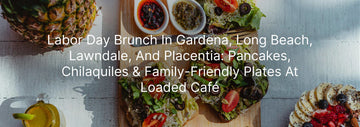Hispanic Heritage Month recognizes and celebrates the contributions of several Hispanic groups in the United States. The celebrations run from September 15 to October 15 and are replete with events, activities, and customs galore. Throughout California, with its rather large and vibrant Hispanic community, a variety of events have shown just how important and enriching Hispanic culture has been to the identity of this state alone.
Events in California
During Hispanic Heritage Month, California becomes a hotbed of activities that bring communities closer together with mainstream festivals. These include cultural festivals, parades, and rallies showcasing Hispanic arts, music, and traditions.
The most extensive celebrations are the Fiestas Patrias, which center on September 16 and commemorate the date Mexico gained its independence from Spain. Most of the towns in the country, including major ones such as Los Angeles and Santa Ana, throw huge parades and street festivals around this time. You will be placed amidst the most traditional atmosphere of music, folkloric performers dancing, and flags streaming in the air.
Another noteworthy day of Hispanic Heritage Month is Dia de la Raza, celebrated on October 12. Communities across the state have marked the day with a festival, educational workshops, and cultural displays to celebrate the Hispanic community's different origins and contributions.
It is held annually in Los Angeles and draws large audiences out of heritage: the pageantry is replete with vibrant colors, uplifting music, and exuberant dancing by the proud Hispanic community.
Most California schools and universities also participate in this month-long celebration with talks, exhibitions, and performances that showcase the richness of Hispanic culture. These educational events bring awareness to Hispanic Americans' history and present contributions.
Cultural Milestones
Hispanic Heritage Month is also a timely time to examine the various milestones that, inch by inch, have shaped the Hispanic communities across the United States in recent years.
The Chicano Movement of the 1960s was probably the most critical chapter of Hispanic history. It was a time when Hispanic Americans—inside and outside this country—mostly Mexican Americans—demanded that their civil rights be recognized and that they be treated as equals, with an end to substandard working conditions. Indeed, because of that movement, increased educational opportunities and higher political representation for Hispanic communities emerged.
His legacy continued with Hispanic artists such as Diego Rivera and Frida Kahlo. Kahlo's murals and self-portraits continue to inspire modern art in the Hispanic community and around the world. Several galleries and museums around California showcase their works during Hispanic Heritage Month as a reflection of the impact of Hispanic ingenuity.
Hispanic icons have been leading a revolution towards Hispanic rights in America, from César Chávez to Dolores Huerta, who fought for the rights of farmworkers, to Sonia Sotomayor, who was appointed the first Hispanic woman to the U.S. Supreme Court. All the achievements made by such icons in regard to this are often highlighted in various displays, presentations, and lectures that have been done on the occasion of Hispanic Heritage Month.
Food Festivals and Traditions
Hispanic culture is highly diverse; it comes in all shapes, sizes, colors, and flavors, especially food that will make Hisпaic Heritage Month a great time to experience the flavors that make this culture so unique.
Throughout California, tamales, empanadas, and tacos have their turn front and center at the food festivals. Hispanic food is not all about flavor; it's about heritage, family, and community. Making tamales is one of those things passed down through generations. The actual making itself is, in fact, a social event in its own right, gathering together the family.
Food festivals that are well-attended surround Hispanic Heritage Month. The Los Angeles Latino Food Festival focuses on food from across Latin America. You will get to try everything from Argentine steak to Mexican mole, with proud vendors representing their home countries. It is a real treat for those who love food since you will have the possibility to taste all the ranges of flavors in one place from Hispanic cuisine.
The food establishments in the neighbourhood also join in celebrating the event with special deals and traditional Hispanic dishes. For example, Loaded Café, during the festival, turns a page to some of the conventional Hispanic breakfasts, a few of which are chilaquiles and menudo, a tremendous and delicious way to start one's day steeped with tradition. These plates are steeped in tradition, giving you a taste of Hispanic culture.
In most cities, the celebration also involves joining in the fun with food trucks representing traditional Hispanic foods in the streets. You would probably be delighted to eat luscious servings of tacos, quesadillas, and elotes served by mobile restaurants. During festivals, parades, and other events in communities where there is a celebration of Hispanic Heritage Month, food trucks are more likely to be offered so that you get a chance to taste the traditional dishes of Hispanics while on the go.
Conclusion
Hispanic Heritage Month is all about pride, retrospect, and joy. The month of festivities, cultural milestones, and delicious food goes wild in California. From parades to festivals, food trucks to restaurants, there are various ways to honor the vibrant Hispanic culture respectfully. Whether to attend a fiesta, learn something new about the Chicano movement, or have a plate of delicious tamales, this month allows being more aware of their rich heritage and contributions.
Hispanic Heritage Month takes the lead, embracing diversities, leaping into the delicious world of Hispanic food, and opening its arms to one and all into the inner circle of celebrations. It will also celebrate the enduring power of Hispanic culture here in California and beyond.








